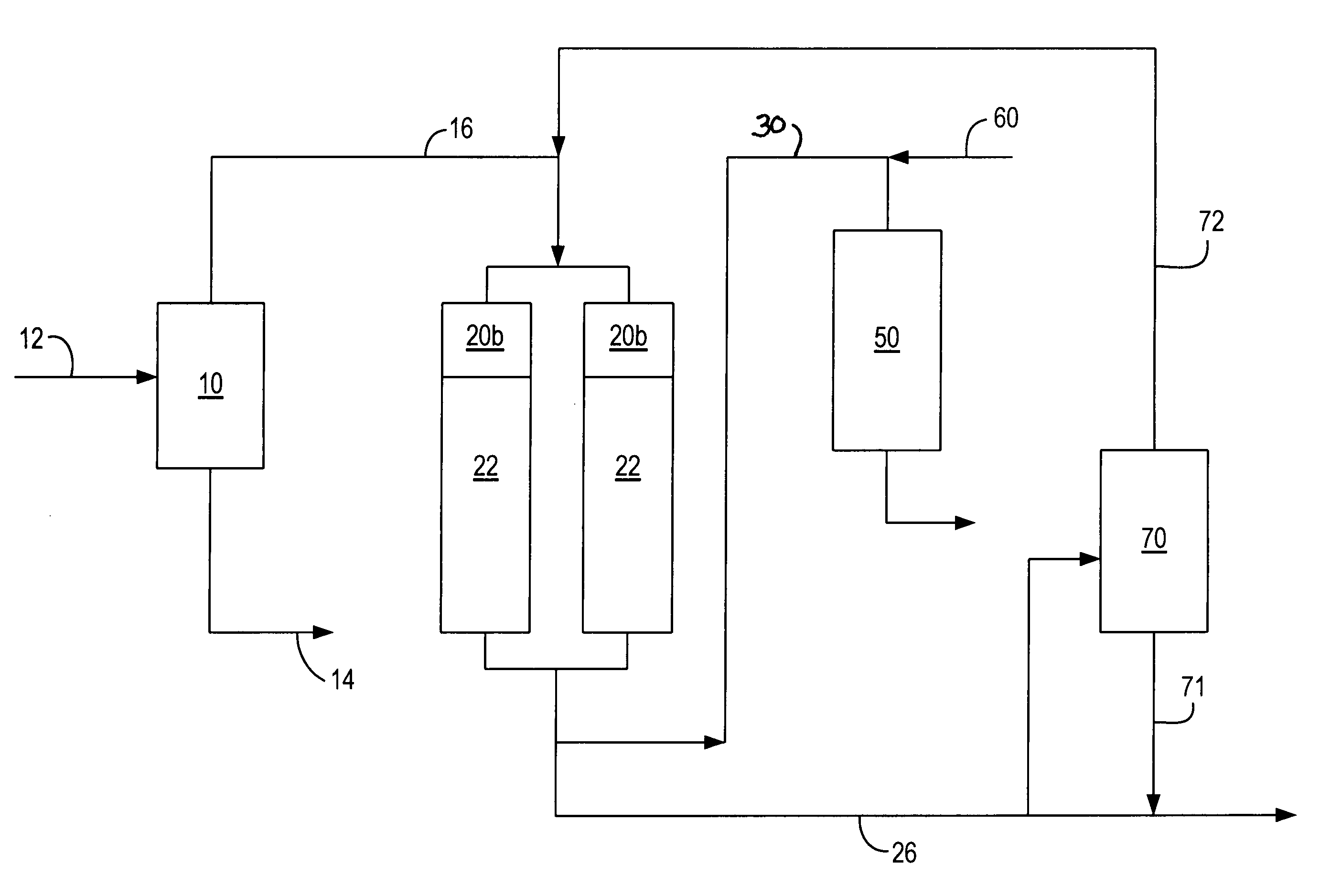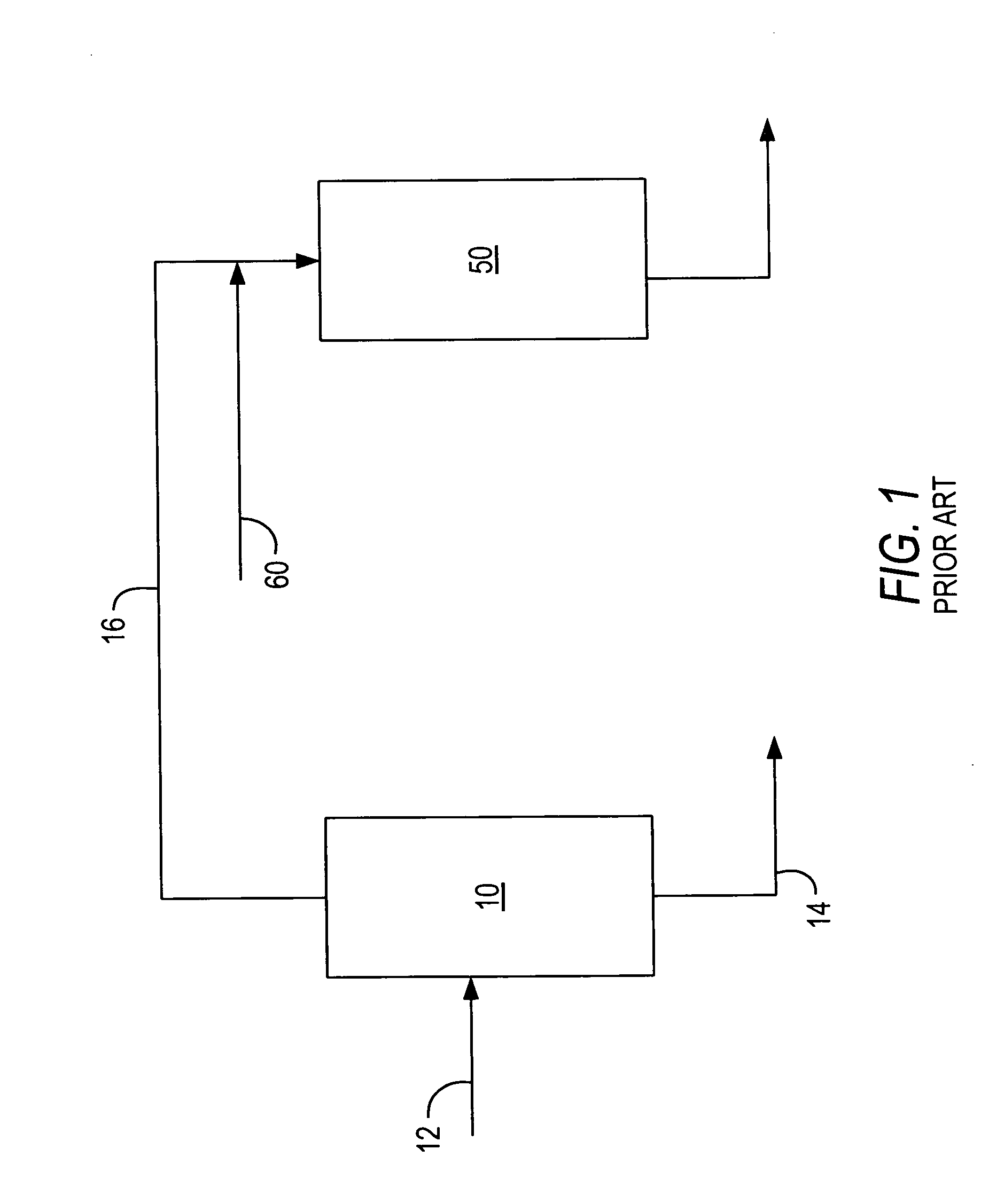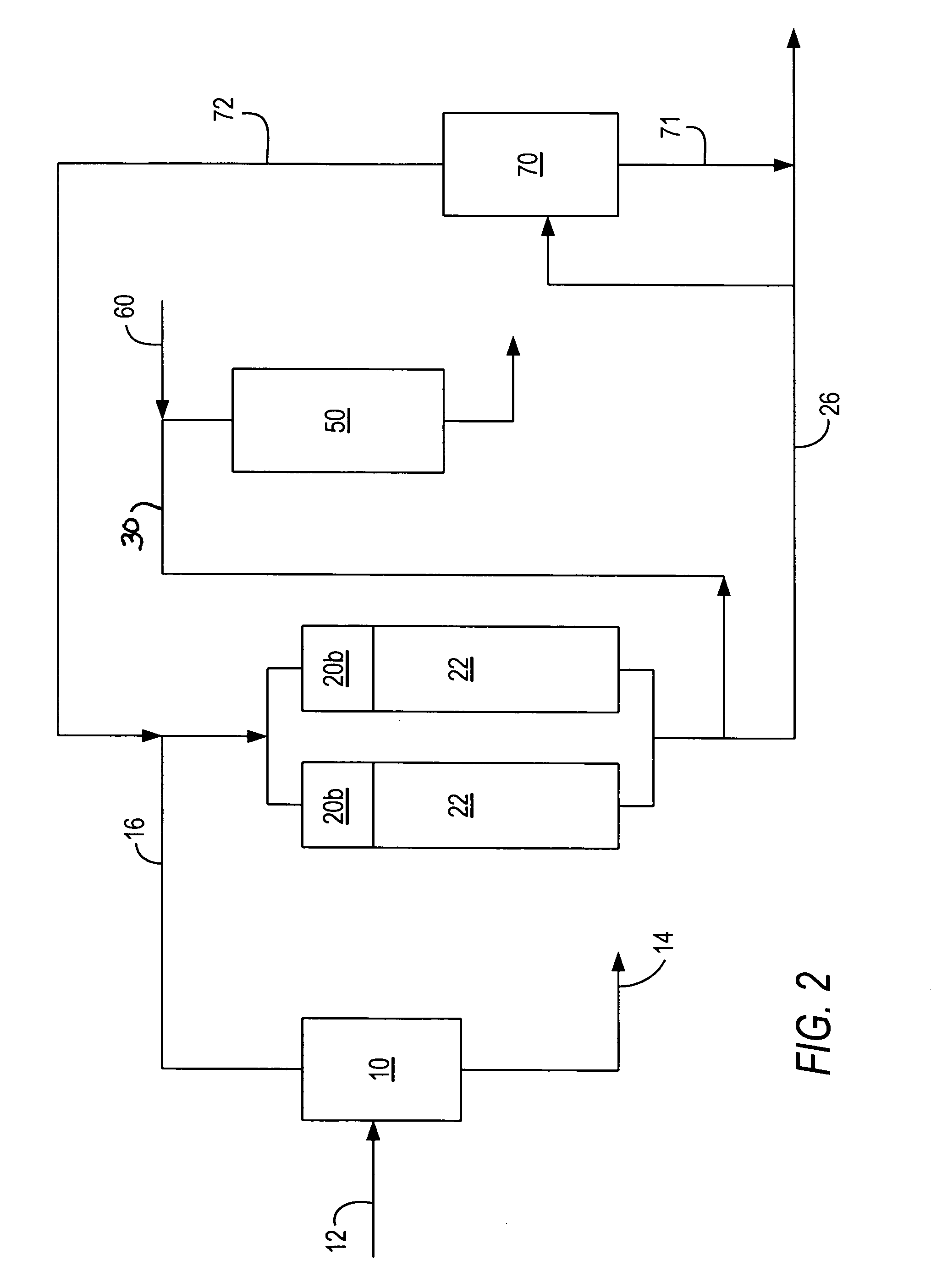Process for removal of nitrogen and poly-nuclear aromatics from hydrocracker and FCC feedstocks
a technology of hydrocracker and poly-nuclear aromatics, which is applied in the field of feedstock treatment, can solve the problems of reducing the overall reducing the efficiency of the hydrocracker and/or the quality of the products produced, and reducing the performance of the hydrocracker unit. , to achieve the effect of increasing the processing capacity of the hydrocracker uni
- Summary
- Abstract
- Description
- Claims
- Application Information
AI Technical Summary
Benefits of technology
Problems solved by technology
Method used
Image
Examples
example 1
De-Metalized Oil Pretreatment
[0043]Attapulgus clay with 108 m2 / g surface area and 0.392 cm3 / g pore volume was used as an adsorbent to remove nitrogen and PNA in a de-metallized oil stream. The virgin DMO contained 85.23 W % carbon, 11.79 W % hydrogen, 2.9 W % sulfur and 2150 ppmw nitrogen, 7.32 W % MCR, 6.7 W % tetra plus aromatics as measured by a UV method. The mid-boiling point of the DMO stream was 614° C. as measured by ASTM D-2887 method. The de-metallized oil is mixed with a straight run naphtha stream boiling in the range 36-180° C. containing 97 W % paraffins, the remainder being aromatics and naphthenes at 1:10 V:V % ratio and passed to the adsorption column containing Attapul gus clay at 20° C. The contact time for the mixture was 30 minutes. The naphtha fraction was distilled off and 94.7 W % of treated DMO was collected. The process reject 1 and 2 fractions yields, which were stripped-off from the adsorbent by toluene and tetrahydrofuran, respectively, were 3.6 and 2.3 ...
example 2
Vacuum Gas Oil Pretreatment
[0046]Attapulgus clay the properties of which are given in example 1 was also used as an adsorbent to remove nitrogen and PNA in a vacuum gas oil. The vacuum gas oil contained 85.40 W % carbon, 12.38 W % hydrogen, 2.03 W % sulfur and 1250 ppmw nitrogen, 0.33 W % MCR, 3.5 W % tetra plus aromatics as measured by UV method. The vacuum gas oil is mixed with straight run naphtha stream boiling in the range 36-180° C. containing 97 W % paraffms the remainder being aromatics and naphthenes at 1:5 V:V % ratio and passed to the adsorption column containing Attapulgus clay at 20° C. The contact time for the mixture was 30 minutes. The naphtha fraction was distilled off and 97.0 W % of treated VGO was collected. The process reject 1 and 2 fractions yields, which were stripped-off from the adsorbent by toluene and tetrahydrofuran, were 1.6 and 1.4 W % respectively. After the treatment process, 72 W % of organic nitrogen, 2 W % of sulfur, 10.9 W % of tetra plus aromati...
example 3
Heavy Diesel Oil Treatment
[0049]Heavy diesel oil containing 85.2 W % of carbon, 12.69 W % hydrogen, 1.62 W % of sulfur and 182 ppmw of nitrogen was subjected to the treatment process of the invention using an adsorption column at 20° C. at LHSV of 2 h−1. The pretreated heavy gas oil yield was 98.6 W %. The yield for the process reject fractions 1 and 2, which were stripped off by toluene and tetrahydrofuran, respectively, at a solvent-to-oil ratio of 4:1 V %, were 1.0 W % and 0.4 W %. The ASTM D2887 distillation curves for the heavy gas oil, treated heavy gas oil, reject 1 fraction which was desorbed from the adsorbent by toluene, and reject 2 fraction which is desorbed from the adsorbent by tetrahydrofuran, are shown in the Table below. The treatment process did not change the distillation characteristics of the heavy gas oil. The reject 1 and 2 fractions are heavy in nature with FBP 302 and 211° C. higher than that of the feedstock heavy gas oil. The process removes the heavy tail...
PUM
| Property | Measurement | Unit |
|---|---|---|
| temperature | aaaaa | aaaaa |
| boiling points | aaaaa | aaaaa |
| volume percent | aaaaa | aaaaa |
Abstract
Description
Claims
Application Information
 Login to View More
Login to View More - R&D
- Intellectual Property
- Life Sciences
- Materials
- Tech Scout
- Unparalleled Data Quality
- Higher Quality Content
- 60% Fewer Hallucinations
Browse by: Latest US Patents, China's latest patents, Technical Efficacy Thesaurus, Application Domain, Technology Topic, Popular Technical Reports.
© 2025 PatSnap. All rights reserved.Legal|Privacy policy|Modern Slavery Act Transparency Statement|Sitemap|About US| Contact US: help@patsnap.com



